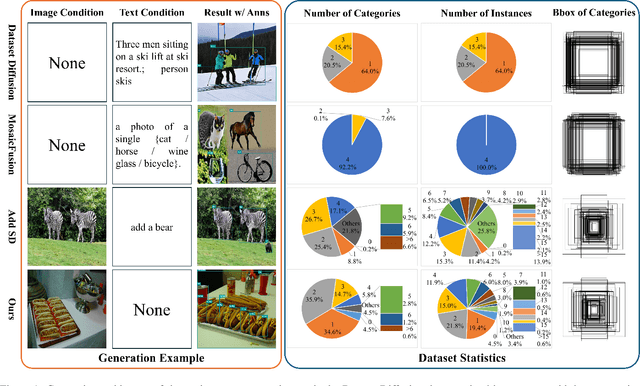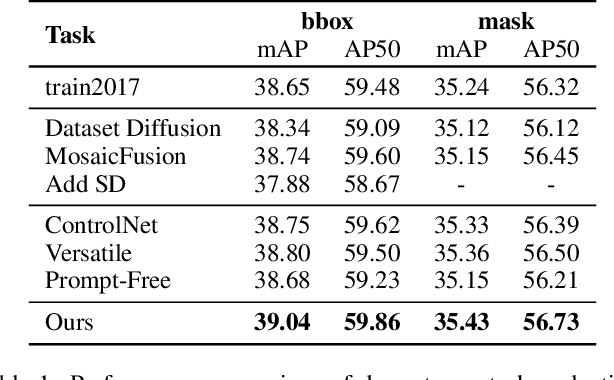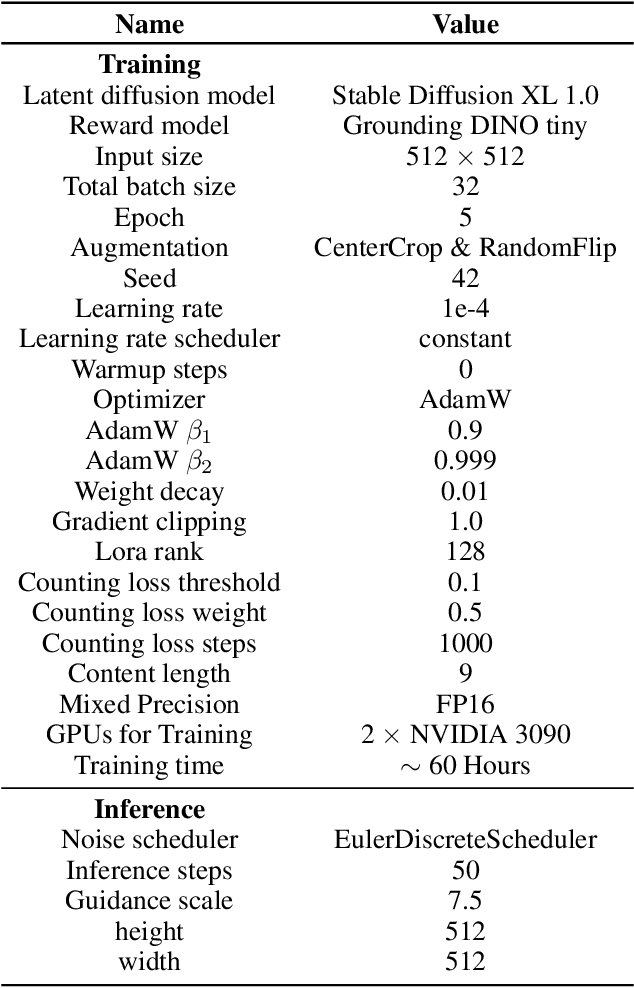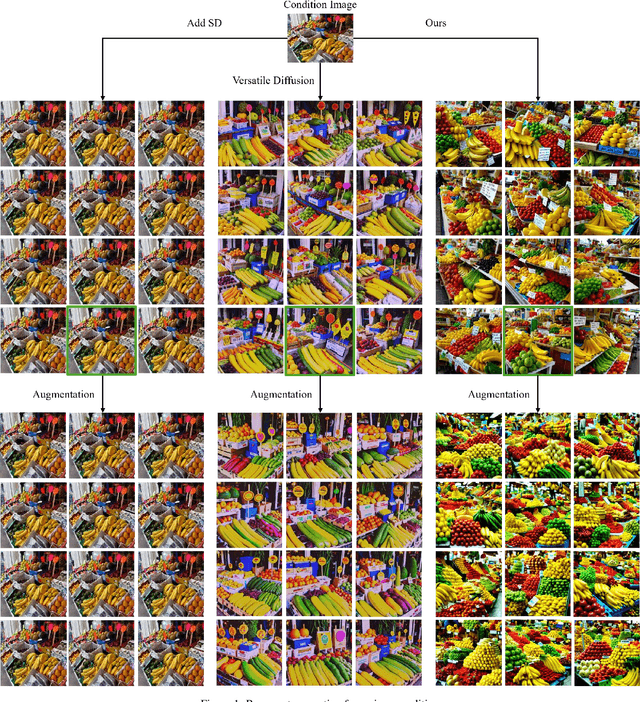Haoyu Wang
and Other Contributors
OpenRubrics: Towards Scalable Synthetic Rubric Generation for Reward Modeling and LLM Alignment
Oct 09, 2025Abstract:Reward modeling lies at the core of reinforcement learning from human feedback (RLHF), yet most existing reward models rely on scalar or pairwise judgments that fail to capture the multifaceted nature of human preferences. Recent studies have explored rubrics-as-rewards (RaR) that uses structured natural language criteria that capture multiple dimensions of response quality. However, producing rubrics that are both reliable and scalable remains a key challenge. In this work, we introduce OpenRubrics, a diverse, large-scale collection of (prompt, rubric) pairs for training rubric-generation and rubric-based reward models. To elicit discriminative and comprehensive evaluation signals, we introduce Contrastive Rubric Generation (CRG), which derives both hard rules (explicit constraints) and principles (implicit qualities) by contrasting preferred and rejected responses. We further improve reliability by enforcing preference-label consistency via rejection sampling to remove noisy rubrics. Across multiple reward-modeling benchmarks, our rubric-based reward model, Rubric-RM, surpasses strong size-matched baselines by 6.8%. These gains transfer to policy models on instruction-following and biomedical benchmarks. Our results show that rubrics provide scalable alignment signals that narrow the gap between costly human evaluation and automated reward modeling, enabling a new principle-driven paradigm for LLM alignment.
TALENT: Table VQA via Augmented Language-Enhanced Natural-text Transcription
Oct 08, 2025Abstract:Table Visual Question Answering (Table VQA) is typically addressed by large vision-language models (VLMs). While such models can answer directly from images, they often miss fine-grained details unless scaled to very large sizes, which are computationally prohibitive, especially for mobile deployment. A lighter alternative is to have a small VLM perform OCR and then use a large language model (LLM) to reason over structured outputs such as Markdown tables. However, these representations are not naturally optimized for LLMs and still introduce substantial errors. We propose TALENT (Table VQA via Augmented Language-Enhanced Natural-text Transcription), a lightweight framework that leverages dual representations of tables. TALENT prompts a small VLM to produce both OCR text and natural language narration, then combines them with the question for reasoning by an LLM. This reframes Table VQA as an LLM-centric multimodal reasoning task, where the VLM serves as a perception-narration module rather than a monolithic solver. Additionally, we construct ReTabVQA, a more challenging Table VQA dataset requiring multi-step quantitative reasoning over table images. Experiments show that TALENT enables a small VLM-LLM combination to match or surpass a single large VLM at significantly lower computational cost on both public datasets and ReTabVQA.
Emotion Omni: Enabling Empathetic Speech Response Generation through Large Language Models
Aug 26, 2025Abstract:With the development of speech large language models (speech LLMs), users can now interact directly with assistants via speech. However, most existing models simply convert the response content into speech without fully understanding the rich emotional and paralinguistic cues embedded in the user's query. In many cases, the same sentence can have different meanings depending on the emotional expression. Furthermore, emotional understanding is essential for improving user experience in human-machine interaction. Currently, most speech LLMs with empathetic capabilities are trained on massive datasets. This approach requires vast amounts of data and significant computational resources. Therefore, a key challenge lies in how to develop a speech LLM capable of generating empathetic responses with limited data and without the need for large-scale training. To address this challenge, we propose Emotion Omni, a novel model architecture designed to understand the emotional content of user speech input and generate empathetic speech responses. Additionally, we developed a data generation pipeline based on an open-source TTS framework to construct a 200k emotional dialogue dataset, which supports the construction of an empathetic speech assistant. The demos are available at https://w311411.github.io/omni_demo/
LaQual: A Novel Framework for Automated Evaluation of LLM App Quality
Aug 26, 2025Abstract:LLM app stores are quickly emerging as platforms that gather a wide range of intelligent applications based on LLMs, giving users many choices for content creation, coding support, education, and more. However, the current methods for ranking and recommending apps in these stores mostly rely on static metrics like user activity and favorites, which makes it hard for users to efficiently find high-quality apps. To address these challenges, we propose LaQual, an automated framework for evaluating the quality of LLM apps. LaQual consists of three main stages: first, it labels and classifies LLM apps in a hierarchical way to accurately match them to different scenarios; second, it uses static indicators, such as time-weighted user engagement and functional capability metrics, to filter out low-quality apps; and third, it conducts a dynamic, scenario-adaptive evaluation, where the LLM itself generates scenario-specific evaluation metrics, scoring rules, and tasks for a thorough quality assessment. Experiments on a popular LLM app store show that LaQual is effective. Its automated scores are highly consistent with human judgments (with Spearman's rho of 0.62 and p=0.006 in legal consulting, and rho of 0.60 and p=0.009 in travel planning). By effectively screening, LaQual can reduce the pool of candidate LLM apps by 66.7% to 81.3%. User studies further confirm that LaQual significantly outperforms baseline systems in decision confidence, comparison efficiency (with average scores of 5.45 compared to 3.30), and the perceived value of its evaluation reports (4.75 versus 2.25). Overall, these results demonstrate that LaQual offers a scalable, objective, and user-centered solution for finding and recommending high-quality LLM apps in real-world use cases.
MoCo: Motion-Consistent Human Video Generation via Structure-Appearance Decoupling
Aug 24, 2025Abstract:Generating human videos with consistent motion from text prompts remains a significant challenge, particularly for whole-body or long-range motion. Existing video generation models prioritize appearance fidelity, resulting in unrealistic or physically implausible human movements with poor structural coherence. Additionally, most existing human video datasets primarily focus on facial or upper-body motions, or consist of vertically oriented dance videos, limiting the scope of corresponding generation methods to simple movements. To overcome these challenges, we propose MoCo, which decouples the process of human video generation into two components: structure generation and appearance generation. Specifically, our method first employs an efficient 3D structure generator to produce a human motion sequence from a text prompt. The remaining video appearance is then synthesized under the guidance of the generated structural sequence. To improve fine-grained control over sparse human structures, we introduce Human-Aware Dynamic Control modules and integrate dense tracking constraints during training. Furthermore, recognizing the limitations of existing datasets, we construct a large-scale whole-body human video dataset featuring complex and diverse motions. Extensive experiments demonstrate that MoCo outperforms existing approaches in generating realistic and structurally coherent human videos.
Humanoid Occupancy: Enabling A Generalized Multimodal Occupancy Perception System on Humanoid Robots
Jul 27, 2025Abstract:Humanoid robot technology is advancing rapidly, with manufacturers introducing diverse heterogeneous visual perception modules tailored to specific scenarios. Among various perception paradigms, occupancy-based representation has become widely recognized as particularly suitable for humanoid robots, as it provides both rich semantic and 3D geometric information essential for comprehensive environmental understanding. In this work, we present Humanoid Occupancy, a generalized multimodal occupancy perception system that integrates hardware and software components, data acquisition devices, and a dedicated annotation pipeline. Our framework employs advanced multi-modal fusion techniques to generate grid-based occupancy outputs encoding both occupancy status and semantic labels, thereby enabling holistic environmental understanding for downstream tasks such as task planning and navigation. To address the unique challenges of humanoid robots, we overcome issues such as kinematic interference and occlusion, and establish an effective sensor layout strategy. Furthermore, we have developed the first panoramic occupancy dataset specifically for humanoid robots, offering a valuable benchmark and resource for future research and development in this domain. The network architecture incorporates multi-modal feature fusion and temporal information integration to ensure robust perception. Overall, Humanoid Occupancy delivers effective environmental perception for humanoid robots and establishes a technical foundation for standardizing universal visual modules, paving the way for the widespread deployment of humanoid robots in complex real-world scenarios.
RAG in the Wild: On the (In)effectiveness of LLMs with Mixture-of-Knowledge Retrieval Augmentation
Jul 26, 2025Abstract:Retrieval-augmented generation (RAG) enhances large language models (LLMs) by integrating external knowledge retrieved at inference time. While RAG demonstrates strong performance on benchmarks largely derived from general-domain corpora like Wikipedia, its effectiveness under realistic, diverse retrieval scenarios remains underexplored. We evaluated RAG systems using MassiveDS, a large-scale datastore with mixture of knowledge, and identified critical limitations: retrieval mainly benefits smaller models, rerankers add minimal value, and no single retrieval source consistently excels. Moreover, current LLMs struggle to route queries across heterogeneous knowledge sources. These findings highlight the need for adaptive retrieval strategies before deploying RAG in real-world settings. Our code and data can be found at https://github.com/ritaranx/RAG_in_the_Wild.
Supply Chain Optimization via Generative Simulation and Iterative Decision Policies
Jul 10, 2025Abstract:High responsiveness and economic efficiency are critical objectives in supply chain transportation, both of which are influenced by strategic decisions on shipping mode. An integrated framework combining an efficient simulator with an intelligent decision-making algorithm can provide an observable, low-risk environment for transportation strategy design. An ideal simulation-decision framework must (1) generalize effectively across various settings, (2) reflect fine-grained transportation dynamics, (3) integrate historical experience with predictive insights, and (4) maintain tight integration between simulation feedback and policy refinement. We propose Sim-to-Dec framework to satisfy these requirements. Specifically, Sim-to-Dec consists of a generative simulation module, which leverages autoregressive modeling to simulate continuous state changes, reducing dependence on handcrafted domain-specific rules and enhancing robustness against data fluctuations; and a history-future dual-aware decision model, refined iteratively through end-to-end optimization with simulator interactions. Extensive experiments conducted on three real-world datasets demonstrate that Sim-to-Dec significantly improves timely delivery rates and profit.
Enhancing Environment Generalizability for Deep Learning-Based CSI Feedback
Jul 09, 2025Abstract:Accurate and low-overhead channel state information (CSI) feedback is essential to boost the capacity of frequency division duplex (FDD) massive multiple-input multiple-output (MIMO) systems. Deep learning-based CSI feedback significantly outperforms conventional approaches. Nevertheless, current deep learning-based CSI feedback algorithms exhibit limited generalizability to unseen environments, which obviously increases the deployment cost. In this paper, we first model the distribution shift of CSI across different environments, which is composed of the distribution shift of multipath structure and a single-path. Then, EG-CsiNet is proposed as a novel CSI feedback learning framework to enhance environment-generalizability. Explicitly, EG-CsiNet comprises the modules of multipath decoupling and fine-grained alignment, which can address the distribution shift of multipath structure and a single path. Based on extensive simulations, the proposed EG-CsiNet can robustly enhance the generalizability in unseen environments compared to the state-of-the-art, especially in challenging conditions with a single source environment.
Prompt-Free Conditional Diffusion for Multi-object Image Augmentation
Jul 08, 2025



Abstract:Diffusion models has underpinned much recent advances of dataset augmentation in various computer vision tasks. However, when involving generating multi-object images as real scenarios, most existing methods either rely entirely on text condition, resulting in a deviation between the generated objects and the original data, or rely too much on the original images, resulting in a lack of diversity in the generated images, which is of limited help to downstream tasks. To mitigate both problems with one stone, we propose a prompt-free conditional diffusion framework for multi-object image augmentation. Specifically, we introduce a local-global semantic fusion strategy to extract semantics from images to replace text, and inject knowledge into the diffusion model through LoRA to alleviate the category deviation between the original model and the target dataset. In addition, we design a reward model based counting loss to assist the traditional reconstruction loss for model training. By constraining the object counts of each category instead of pixel-by-pixel constraints, bridging the quantity deviation between the generated data and the original data while improving the diversity of the generated data. Experimental results demonstrate the superiority of the proposed method over several representative state-of-the-art baselines and showcase strong downstream task gain and out-of-domain generalization capabilities. Code is available at \href{https://github.com/00why00/PFCD}{here}.
 Add to Chrome
Add to Chrome Add to Firefox
Add to Firefox Add to Edge
Add to Edge